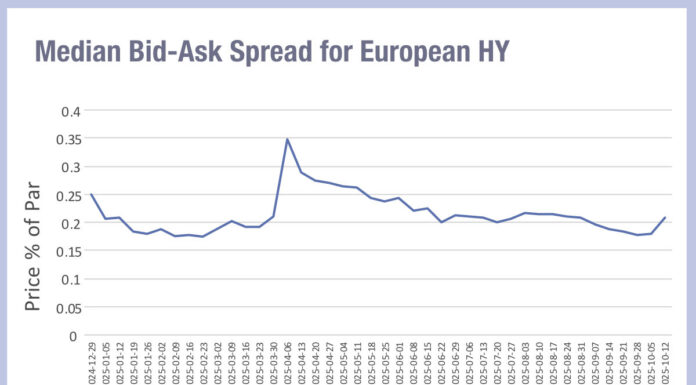Fixed income markets moving toward electronic trading has been a recurring theme in the industry for a number of year, but there are roadblocks to progress to a more electronic future, with screen-based trading possibly as prevalent as it is in equities.
Limiting factors were discussed Thursday morning at the Fixed Income Leaders Summit in Boston.
Carl James, head of fixed income at S&P Global Market Intelligence, said rather than ask about how and why electronic trading is taking hold, a more appropriate question is “why so slow?”
James offered a philosophical take. “We have stone age emotions, medieval institutions, and god-like technology,” he said on the Next Stage of Electronification panel. “It’s the human element. People don’t want to adapt and evolve.”
Panelists noted that in credit markets, electronic trading still struggles to catch on above a certain trade-size threshold, due largely to concerns about intent being picked up by the market.

“It comes down to market impact,” said Jason Quinn, chief product officer and global head of sales at Trumid. Historically, the answer for traders concerned about information dissemination was to use the phone and IM to negotiate bilaterally, but that is slowly changing.
“There has been an evolution in tools available, both for the buy side and sell side,” Quinn said. “We are seeing progress. Most blocks are still dealer-to-client, but that doesn’t mean those trades can’t be digitized in some way.”
On the following Workflow Automation panel, the audience was asked where they were on their journey toward automation and electronification. Almost half of respondents, or 46%, said they were at mid-to-late stage; 34% said mid stage;13% said late stage; and 9% said early journey.
When asked about their top trading technology pain point, 42% of respondents said trading system fragmentation and a lack of integrated systems, while 29% cited a similar concern, that no system “does it all”.
Tim Gigliotti, global head of fixed income trading at Nuveen, said the future of will be about connectivity, or “the internet of fixed income” where a firm can communicate seamlessly both within its four walls and with external parties.
Michael Loggia, global head of workflow technology at Virtu Financial, said market participants have a strong desire for automation, but there is a need for better pre-trade information to provide the right logic to the system.
How should firms at the early stage of automation and electronification accelerate the process?
Loggia suggested starting small, not being afraid to do proof of concepts (POCs), and consulting other firms who have gone through the process.
Gigliotta said budget permitting, “embed in your front office a technology expert and market structure expert to serve as the liaison team to interface with vendors, traders, and other internal teams….That will make implementation and breaking down fears that much easier.”
©Markets Media Europe 2024
©Markets Media Europe 2025













